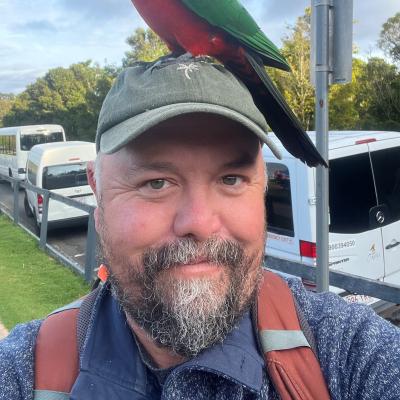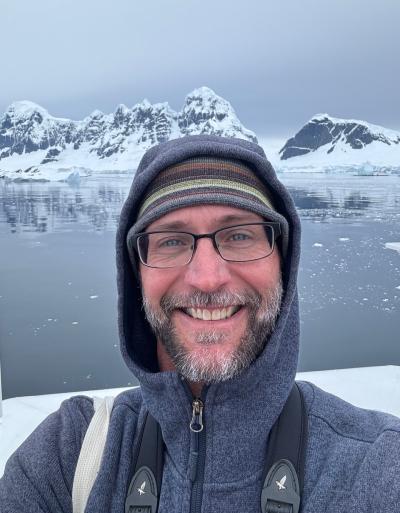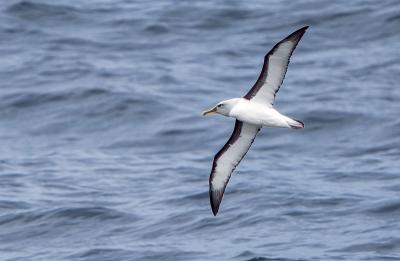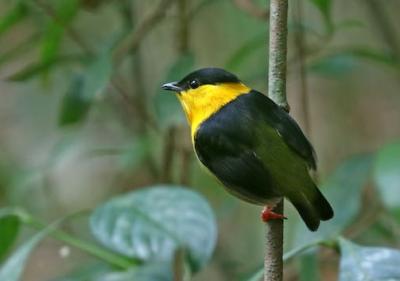Bahamas: Abaco, Andros and Nassau
with Grand Cayman Extension
-
Apr 5-11, 2027
Gavin Bieber
Grand Cayman extension to Apr 13
Tour Price to be Determined
Tour Price to be Determined
Lying just off the coast of Florida, the Bahamas float in the imagination as a place of sun, sand and raucous nightlife. The image is correct in part but the Bahamas also offer a remarkably diverse natural landscape, especially on the Out Islands (those away from the highly developed Nassau and New Providence Island). The country of the Bahamas is vast; covering more than a seven hundred islands (roughly thirty of which are inhabited) and several thousand more small cays spread over an area of over thirteen thousand square Kilometers. It’s the most northerly island group in the West Indies, and shares a biological affinity with the Greater Antilles (especially Cuba) and nearby Florida. With nearly 200 breeding species and a further 140 regular migrants it’s a rich place for birds. Of chief interest to the visiting naturalist are the six country endemics, 5 of which we will have an excellent chance of encountering, as well as roughly 30 more Caribbean specialties including several species that are found only in the Bahamas and nearby Cuba. The three islands that we will spend time on are among the least developed and most biologically interesting in the vast archipelago. Good habitat exists right around our marvelous waterfront lodges and all major habitats are within an easy drive. For those who wish, fine snorkeling and world-class diving can be found just offshore and the sand beach and quiet water at our doorstep are always inviting. Our short extension to the rather remote Grand Cayman Island offers an excellent chance at two more range restricted Caribbean endemics; the Vitelline Warbler, and newly split Grand Cayman Bullfinch.
Day 1: The tour begins this evening at our hotel on the island of Abaco. Night at Abaco Beach Resort.
Days 2-3: Abaco is the second largest island in the Bahamas, and offers the visiting naturalist stands of Caribbean Pine, with a rich understory of Thatch Palm and ferns, thickly vegetated native coppices, mangrove forests and sweeping white sand beaches. We’ll look in particular for Abaco specialties such as White-cheeked Pintail, West Indian Woodpecker, Cuban Parrot (a local subspecies which curiously nests underground), the endemic Bahama Swallow and Bahama Warbler, and the near-endemic Olive-capped Warbler. Nights at Abaco Beach Resort on Abaco Island
Day 4: We’ll spend the morning around Abaco, concentrating on any missed species from the prior days before heading to the airport for our short afternoon flight to Nassau. Night in Nassau.
Days 5-6: We’ll begin the morning of Day 5 with a flight from Nassau to Fresh Creek, North Andros Town, and the wonderful Small Hope Bay Lodge. Andros offers a remarkable natural environment. In the north, soft tropical sands sweep back into pine forests. In the center of the island, thick low-lying brush opens to inland waterways and tidal flats. Along the eastern shore, coral rock splits open to underground rivers, and mangrove marshlands feed a pristine reef, the third longest in the world.
We’ll spend our time birding around the northern part of Andros Island. In native scrub across the road from our lodge we’ll look for Great Lizard Cuckoo, Loggerhead Kingbird and Thick-billed Vireo. In the pines and coppices, we’re likely to see Cuban Emerald and Cuban Pewee. Near Stainard and Fresh Creeks we’ll search for Bahama Swallow, La Sagra’s Flycatcher and the critically endangered Northrop’s Oriole. We also stand at least a chance of encountering the threatened West Indian Whistling-Duck. Another delight of birding at this season in the northern Bahamas is the chance to observe a number of North American warblers on their wintering grounds; we could possibly see 12 or more species. Finally, as delightful as the birding and weather are likely to be, a great feature of Andros must be our lodge: comfortable, informal and perched under coconut palms on the edge of its own gently sloping sand beach. Those who wish can partake in good snorkeling and superb diving; indeed, most of the lodge’s customers come for these activities. Nights at Small Hope Bay Lodge on Andros Island.
Day 7: A short morning flight back to Nassau should give us time to explore a bit around New Providence, where we’ll seek out Cuban Grassquit and Caribbean Dove (both introduced into the Bahamas but thriving on New Providence Island). Night in Nassau.
Day 8: The main tour ends today with flights home.
Grand Cayman Extension:
Day 8: Those joining our Grand Cayman extension will take a roughly two hour midday flight to Grand Cayman. Night on Grand Cayman.
Day 9: We’ll have a full day to bird around Grand Cayman, doubtless with some time on the well-known Mastic Trail which leads through a wonderful stand of old-growth dry forest growing on an uplifted limestone reef as well as the local Botanic Gardens, with their series of small wetlands and taller stands of trees. Here we’ll look for the newly minted Grand Cayman Bullfinch and the pretty, if understated, Vitelline Warbler, as well as a selection of subspecies endemic to the Caymans such as Cuban Parrot and Caribbean Dove, both possible future splits, and a few non-endemic species that will be new to us such as Yucatan Vireo, Greater Antillean Grackle and Caribbean Elaenia. The island also hosts a few special species of reptiles, and we’ll keep an eye out for the jewel-like Grand Cayman Anole, the furtive Grand Cayman Curlytail and the impressively bulky Grand Cayman Blue Iguana. Night on Grand Cayman.
Day 9: The extension concludes this morning with shuttles back to the airport.
The Bahamas: Andros Island (only) 2006 Tour Narrative
The 2006 tour of Andros Island was exceptional. The relaxed atmosphere of the splendid Small Hope Bay Lodge along with the friendliness and superb service of the staff provided a perfect backdrop to birding this large Caribbean Island. We spent the mornings alternating between searching the heavily vegetated villages of Andros for migrant and wintering North American species and visiting native coppice and “upland” Caribbean Pine forests for the several West Indian species that are rare or unrecorded in the United States. A tour to such a scenic and relaxing place as the Bahamas serves as both a vacation and an opportunity for seeking out a nice assortment of birds. The trip highlights likely are different for every participant, but some of my favorite non-avian memories include the nightly social hour with truly delectable conch fritters, mingling with the varied guests at the lodge, exploring some of the many old backcountry logging roads that bisect the island’s interior, visiting several inland Blue Holes (which give the intrepid scuba diver a unique access to the extensive underwater cave systems that lie below Andros), and simply walking the white sand beaches or watching the amazingly blue sea, with a Pina Colada in hand. The birds did not disappoint with repeated and excellent looks of such range-restricted species as Bahama Woodstar, Cuban Emerald, Cuban Pewee, La Sagra’s Flycatcher, Loggerhead Kingbird, Bahama Mockingbird, Thick-billed Vireo, Bahama Yellowthroat, Greater Antillean Bullfinch and Western Spindalis. Two special treats were our prolonged view of a juvenile Great Lizard Cuckoo, catching and then devouring a large walking stick, and of repeated close studies of the endemic subspecies of Greater Antillean Oriole, which is a prime candidate for full species status and is wholly confined to Andros Island. Some other exceptional finds were an incredible 6 species of Vireos, and an amazing 21 species of North American Warblers including a very rare find for the Bahamas, the Orange-crowned!
Note: For 2013 we have expanded the tour to include the nearby island of Abaco, where we hope to add several more interesting and range restricted species such as Cuban (Bahama) Parrot, Olive-capped Warbler, Bahama Swallow and the insular race of Yellow-throated Warbler. We will have a short time on Nassau at the beginning of the extension, where it’s easier to pick up such species as Caribbean Dove, Cuban Grassquit, and White-cheeked Pintail.
Maximum group size seven with one leader



























